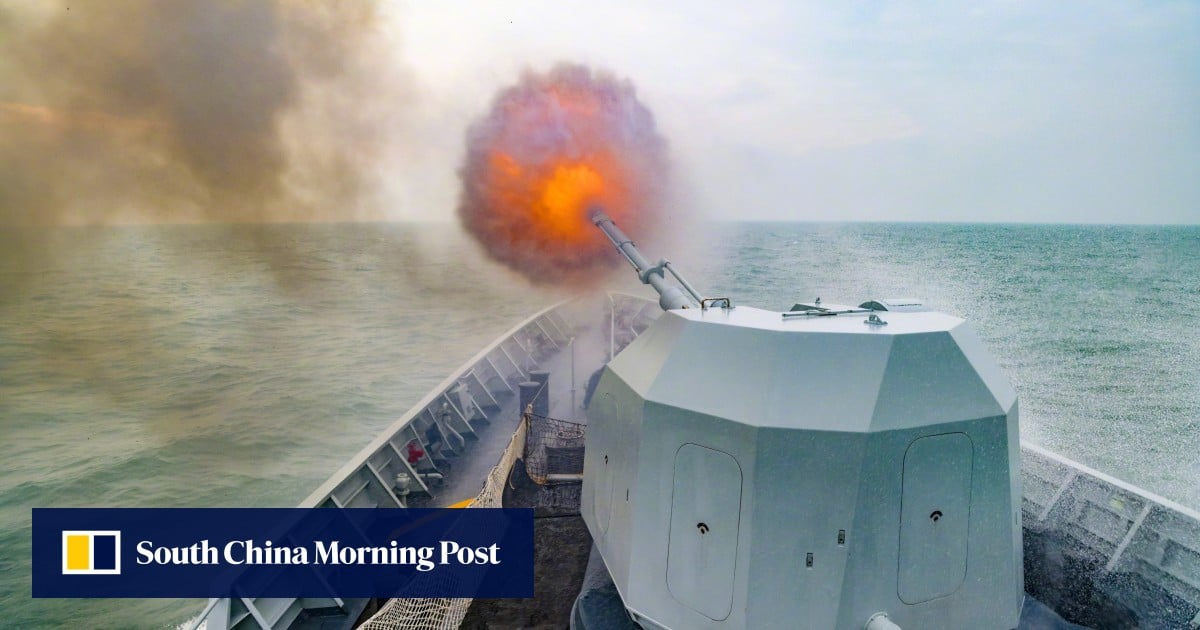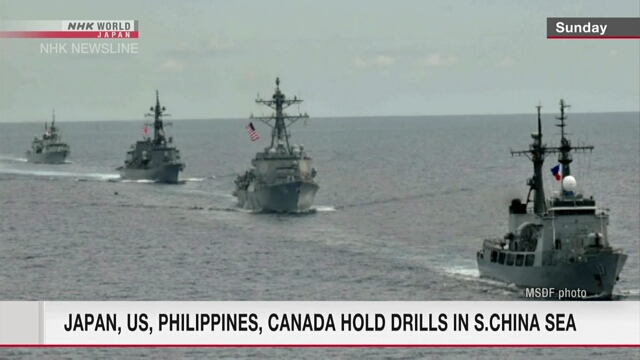








The geopolitical landscape in the South China Sea has become increasingly complex, with various military activities and strategic posturing by nations in the region. In a significant escalation, the People's Liberation Army (PLA) Navy conducted drills focused on air defense, missile interception, and damage control in late autumn 2024, amid rising tensions with neighboring countries like the Philippines and Vietnam [05476765].
The Philippines has announced plans to upgrade infrastructure on Thitu Island, extending its airstrip to 1.5 km (0.9 miles) to accommodate larger aircraft, which signals its commitment to enhancing military capabilities in the region [0541c8f6]. In a direct response to China's assertiveness, the United States has deployed 'Task Force Ayungin' to the South China Sea, aimed at enhancing intelligence gathering for the Philippines regarding the Second Thomas Shoal. US Defence Secretary Lloyd Austin confirmed the task force's existence during his visit to the Philippines on November 19, 2024, emphasizing the U.S. commitment to supporting Philippine operations without direct military involvement [0541c8f6].
Recent studies indicate that China's Yongshu Reef port has drastically improved its emergency response capabilities, reducing average response times significantly. This facility, established in 1987 and expanded through artificial island construction, is poised to become one of China's most advanced military installations, potentially reaching 60 square kilometers [048767f8]. Meanwhile, Vietnam has reclaimed over 2 square kilometers in the Spratly Islands since October 2021, further asserting its territorial claims amidst ongoing disputes [05476765].
In a related development, the U.S. military is set to establish temporary bases on Japan's Nansei island chain and the Philippines for missile units in case of a Taiwan contingency. This deployment will be included in the first joint operation plan between the U.S. and Japan, scheduled for December 2024, reflecting growing defense cooperation in response to threats from China and North Korea [7e0abe69].
The recent announcement of plans to deploy HIMARS missiles on Yonaguni Island has alarmed China. This strategy, proposed two years ago, has gained traction with Japan's agreement and the Biden administration's support. HIMARS can strike invasion ships, with the Army Tactical Missile System (ATACMS) having a range of 190 miles, effectively covering routes for a potential Chinese invasion [fbceebf4].
India has also increased its military presence in the South China Sea, deploying three warships to monitor Chinese activities closely, part of a broader effort to counter China's expanding naval influence [41a14ccf].
Amidst these developments, the South Korean Navy conducted its first maritime drills of 2025, involving nine warships and two aircraft from various fleets, emphasizing the need for operational readiness amidst regional tensions [33549f5f].
The situation remains tense as the Philippines has reported clashes between its coast guard and Chinese vessels, with experts noting that aggressive measures could disrupt regional stability. Both nations are urged to manage their differences carefully to avoid further escalation [05476765].
In a broader context, the U.S. military's strategy in the Pacific, particularly through the Marine Corps' Force Design 2030 initiative, aims to modernize and focus on the Indo-Pacific. However, this strategy has faced criticism due to its reliance on mobile expeditionary advanced bases (EABs) near civilian populations, which could expose them to enemy fire. The Okinawa Prefectural Government reports that 70.3% of U.S. military facilities in Japan are located in Okinawa, where local opposition to U.S. bases is strong, leading to protests against deployments. Retired generals have criticized the strategy, and the Marine Corps acknowledges civilian opposition as a potential threat to EAB security, calling for better engagement with local communities to mitigate risks [5e226b3e].
The ongoing military exercises and territorial assertions by various nations highlight the complex geopolitical dynamics in the South China Sea. The presence of multiple navies, including those from the U.S., Canada, Japan, and the Philippines, underscores collaborative efforts to maintain regional security and stability amidst China's growing assertiveness [32dfa40e].